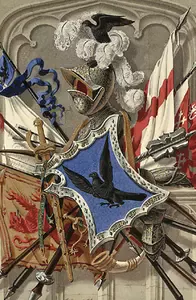- Home
- Your Views
- CRIM and the Cluster
CRIM and the Cluster
by Dylan
(Illinois, Wisconsin)

CRIM nicely summarizes a scifi phenomenon I've been trying to label for weeks. It's the colorful intergalactic buffet of humanoid aliens, planets, and weirdness that can be seen in such on-screen IP's as Doctor Who, Guardians of the Galaxy, Star Wars, and (to a lesser extent) Star Trek. The comedic animated shows Futurama and Rick and Morty also embrace it. It's the sort of universe where you get the feeling that just about anything might be out there, and where the kinetic energy of an interstellar setting is embraced above realism.
But it didn't start out in interstellar space, as we know. The bustling interplanetary market existed before mankind left the Solar System, epic space battles first happened within the orbit of the sun, and space cowboys were smuggling between Venus and Mars before they smuggled between Tatooine and Alderaan. I postulate that the OSS has more classic authors because it came first, and only lost popularity to the wider galaxy in more recent years.
That said, you are absolutely correct in saying that the planets of the OSS have much stronger character than a Vulcan or a Trantor. Interstellar planets are so numerous that often, little work is spent developing them as little time is spent with them in the course of the plot. There are exceptions, of course - Dune comes to mind - but generally I favor the OSS for that reason.
You mention Hamilton! I've just picked up my first Hamiltonian novel, a little number called Doomstar. I didn't know what to expect when I got into it, certainly I hadn't expected what I got.
It's a CRIM, and a wonderful CRIM at that. The characters are likeable, the plot is expertly paced, the planets are interesting and memorable, everything one could ask for. The setting in particular stood out to me as rather ingenious, a sort of compromise between the interstellar and interplanetary stages. It's called "The Cluster", a large group of stars that happen to be bunched together, many of which sport habitable worlds with indigenous life. For the inhabitants of The Cluster, travel between stars, and thus between planets, was easier than it is for us, providing the sense of busyness one gets in a crowded OSS while allowing for the unfortunate emptiness of the real Solar System.
My only complaint with the book is that the women in the story are few and of little consequence, but then, it was written in 1966. If one wants to enjoy older books, one has to learn to tolerate such things.
{comment from Zendexor: Glad you are enjoying your first Hamilton. I myself enjoyed Doomstar better the second time I read it - I didn't appreciate it properly at first. By the way I believe the Cluster in the book is the Hyades, if I remember correctly. Interesting, your comment placing inter-Cluster space as a category intermediate between interplanetary and interstellar. The three Alastor Cluster books by Jack Vance come to mind: Marune Alastor, Trullion Alastor and Wyst Alastor. I wouldn't class these as CRIM, however, because the adventures concentrate on one world each.}
Comments for CRIM and the Cluster
|
||
|
||





































